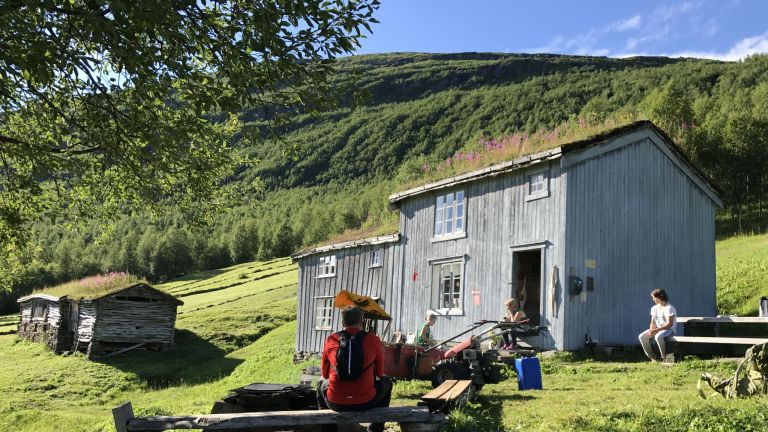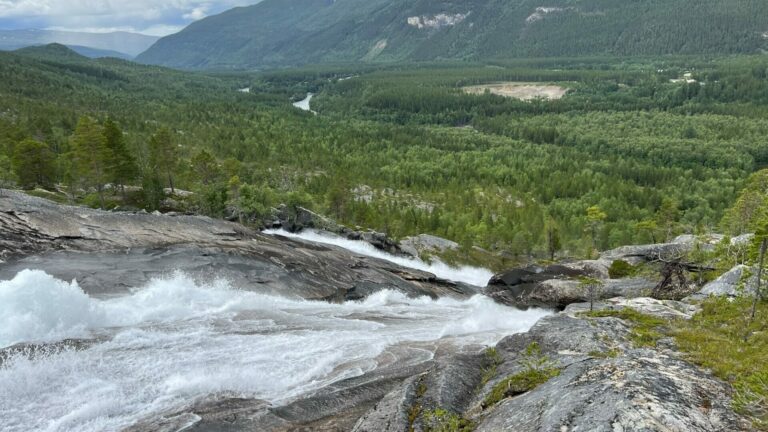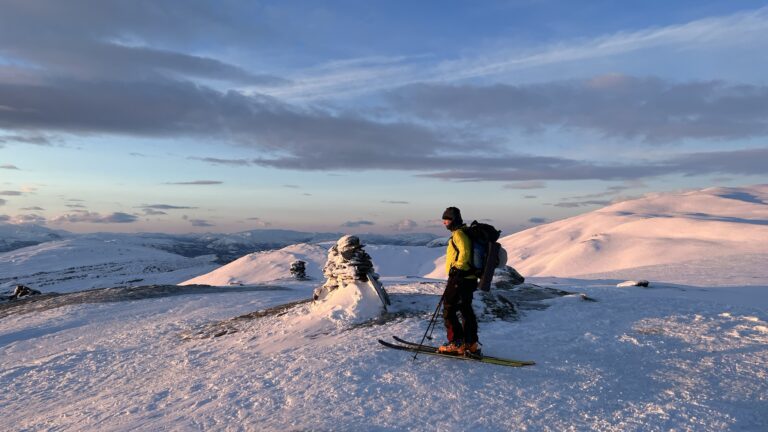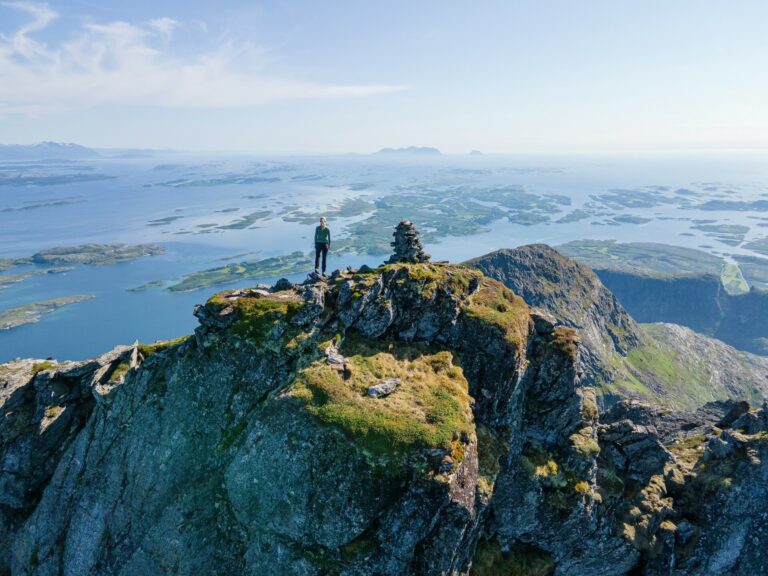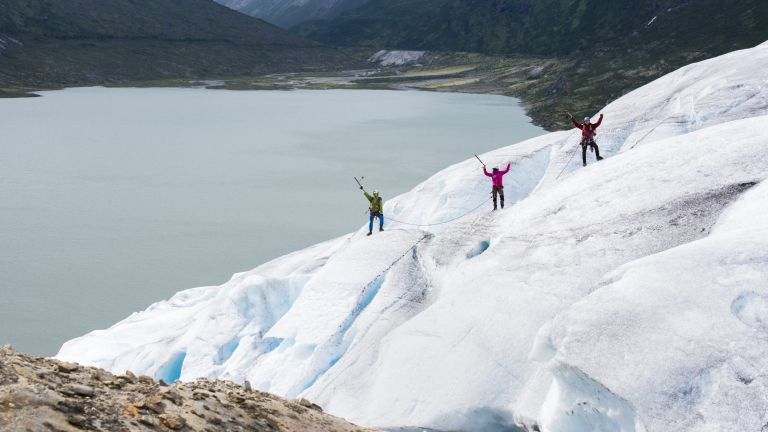A hiking adventure: The Lapplia Homestead
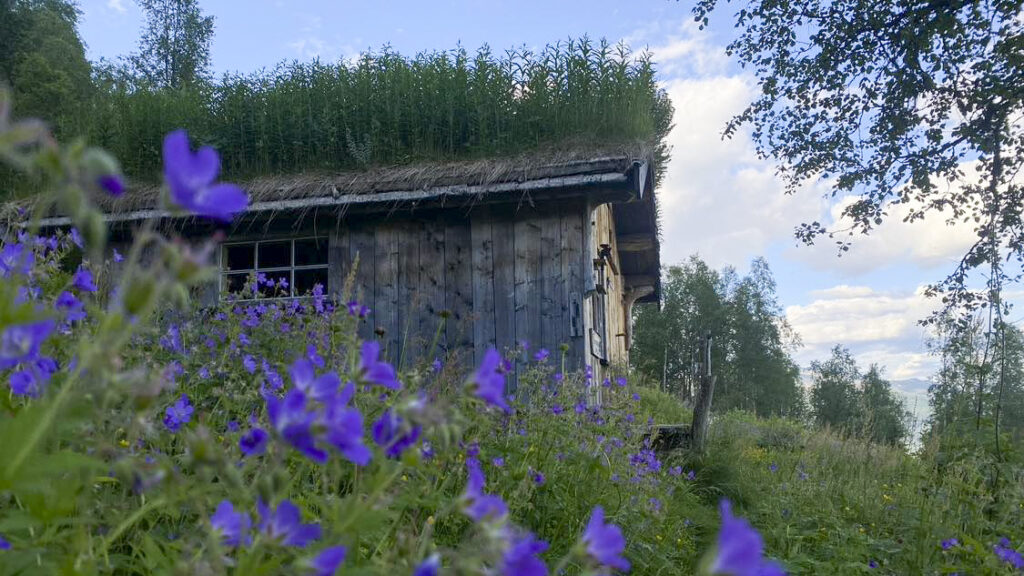 Lena Westman
Lena WestmanThe hike to the old homestead of Lapplia, takes you up a steep but nice and well-adapted path, through a forest and up the valley side, close to the E6, a short drive north of Mo i Rana.
Key info
Difficulty: Moderate. Short hike, but steep terrain.
Distance one way: About 1 kilometer
Elevation gain: About 270 meter-elevation
Duration one way: 30 to 60 minutes
Season: June – October
Trailhead: The hike starts by the parking space by E6, north of Røssvoll in Mo i Rana.
Find trailhead on Google Maps
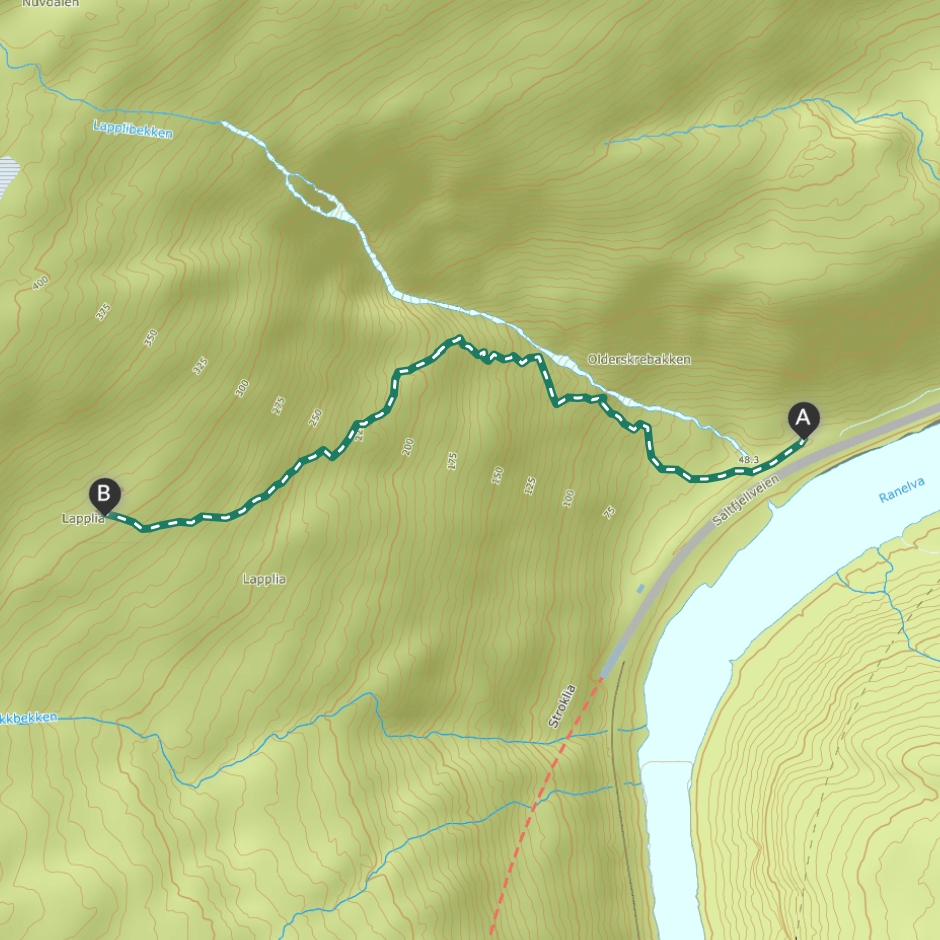 UT.no / Norgeskart
UT.no / Norgeskart
Download GPX
The hike up to the old homestead of Lapplia is a nice wellness hike up the valley side by the river Ranelva. The terrain is steep, but the path is nice and well-adapted. So it’s a nice fit for seasoned hikers or families, regardless of age, and for whoever is looking for a quick mountain hike.
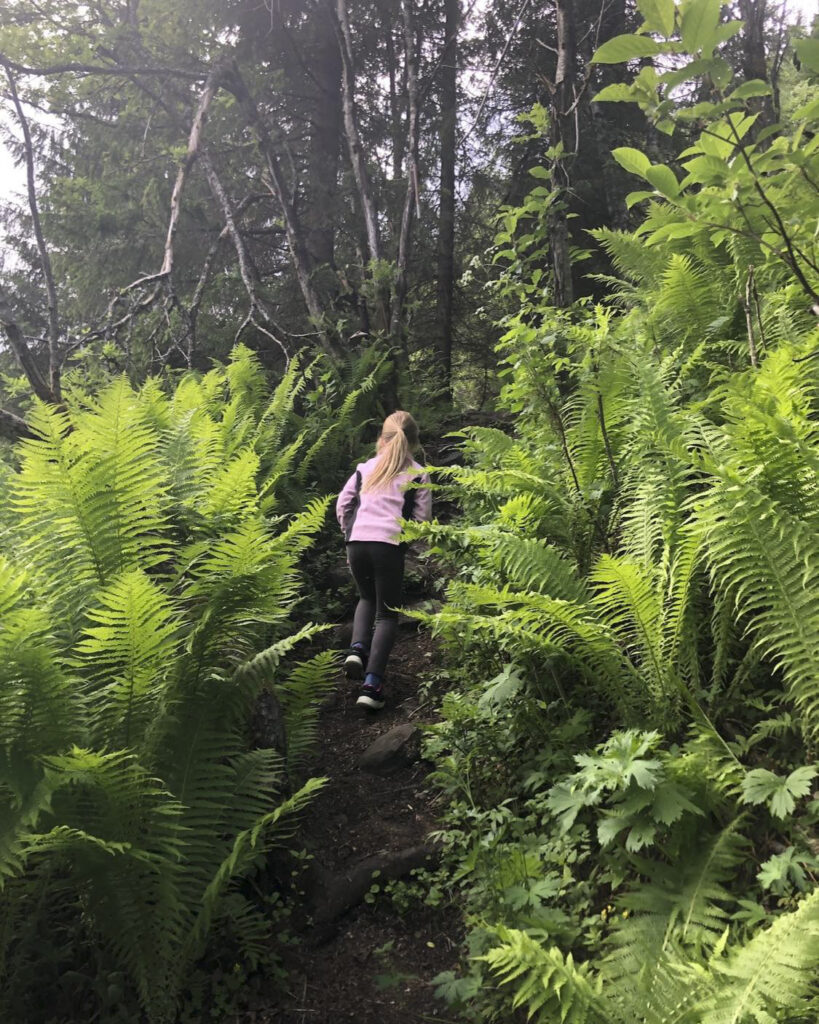 Lena Westman
Lena Westman
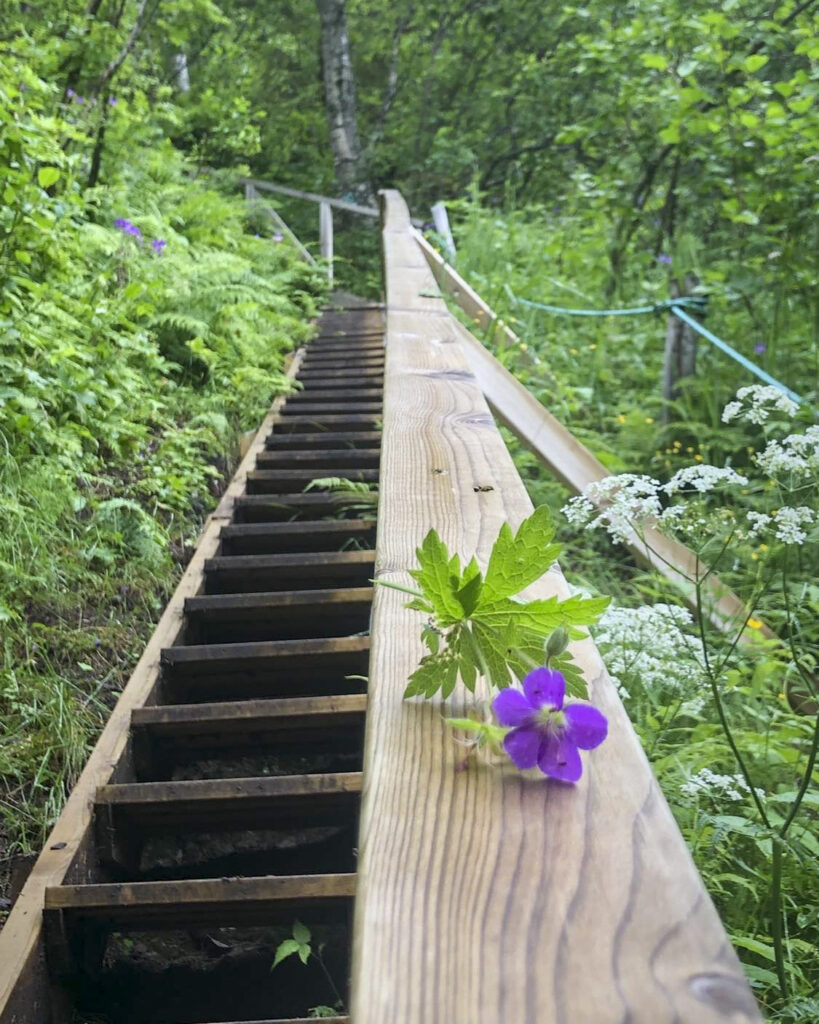 Lena Westman
Lena Westman
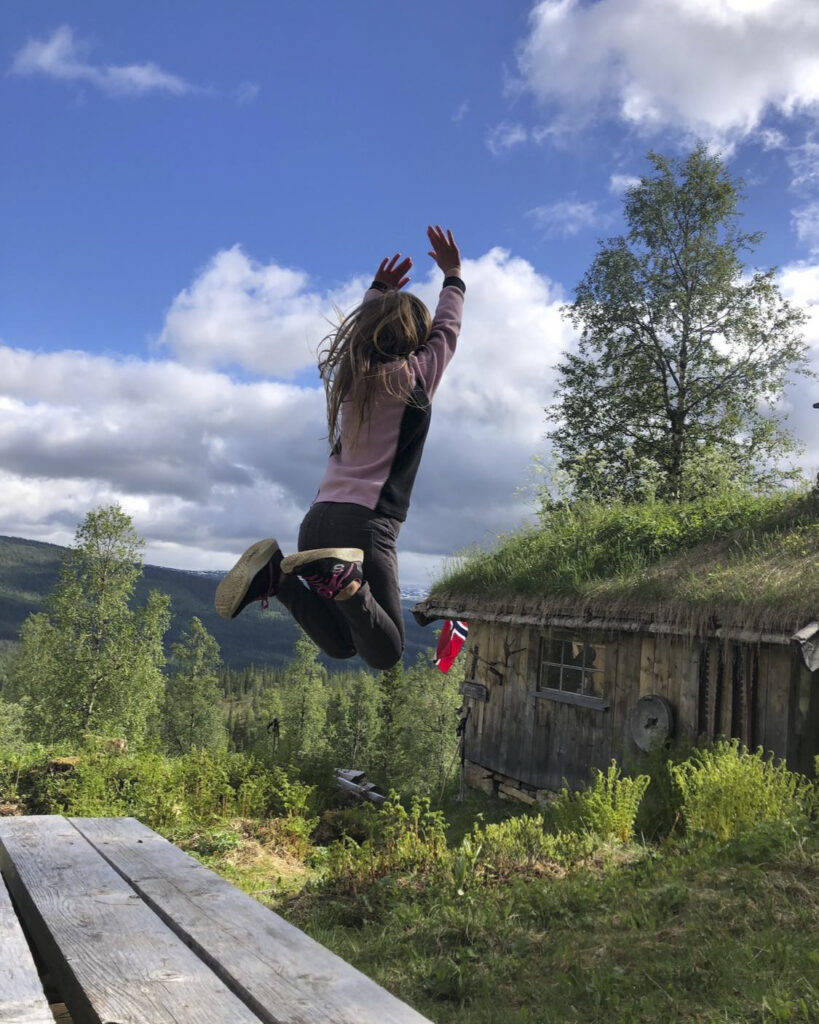 Lena Westman
Lena Westman
The old homestead that originally was from 1858 was rebuilt, along with a forge and «Lapplistua» by the organization Lapplias Venner. Here you can also find a life-sized wooden sculpture of the Lapplibull. And the story about the Lapplibull is something you can read about when you get there.
Lapplistua is unlocked year-round, so you can just walk inside the cabin, light a fire, and enjoy a packed lunch while looking out at the beautiful view of the valley below.
If you’re able, any donation for maintenance fees of Lapplia to Lapplias Venner through Vipps 518735 would be greatly appreciated.
1. Follow the Norwegian Mountain Code and plan according to your ability and equipment
Short hikes on easy terrain don’t require much. If you’re heading out for an hour or two in the lowlands and not gaining much elevation, you won’t need a lot of gear or be in top shape. If it gets cold or you get tired, you’re usually not far from your car.
But if you’re heading into more challenging terrain—steeper, rougher, and above the treeline where the weather is more unpredictable—you’ll need to be better prepared. You should plan the trip based on weather and conditions, be fit enough to complete it, and be ready for uneven ground, boulder fields, slippery roots, and stream crossings. That means carrying a heavier pack with extra clothes and gear, and wearing sturdy hiking boots that support your ankles.
If you’re unsure about taking on a demanding mountain hike, start with an easy or moderate one and see how it feels.
Learn more about the Norwegian Mountain Code at rodekors.no
See what you should bring on your hike on VisitNorway.com
2. Stick to marked trails
A shortcut through unfamiliar terrain can easily turn into a long and difficult detour. What looks like a trail might just be a sheep path that leads you somewhere completely unexpected. If you want the hike to be as easy or challenging—and as long or short—as planned, it’s best to follow marked trails.
If you’re heading off-trail, it’s smart to follow a GPS track. You can download a GPX file from a hike description and use it on a GPS device, a smartphone app, or a GPS watch.
UT.no and the UT app offer hike descriptions with GPS tracks. If your hike doesn’t have one, you can upload a track to ut.no/mine-turer and access it in the app. It’s free, but you’ll need to create an account.
Always carry a map and compass as backup.
UT app for Android / UT app for iPhone
3. Talk to locals or join a guided hike
Locals often have useful tips about your planned hike. They can tell you where to park, whether there’s phone coverage, if the trail is wet, if rivers are high, or suggest a better alternative. Talk to the people where you’re staying, at the local tourist office, or other hikers on the trail—you might get some truly valuable advice.
The best option is to hike with a guide. You can join a group tour or book a private guide. These are experienced locals who know the area well. They’ll help tailor the hike to your needs and share insights that add to the experience.
4. Look out for cultural landmarks
Even high up in the mountains, you’ll find traces of past human activity—some hundreds or even thousands of years old. These can include ancient trail markers, signal cairns, hunting fences, huts, and shepherd shelters. If you spot something interesting, check the KulturPunkt app to see what it is—or use the app to find a cultural site as your hiking goal.
KulturPunkt app for Android / KulturPunkt app for iPhone
KulturPunkt.org
5. Remember your responsibilities under the Right to Roam
Norway’s Right to Roam means you can hike, bike, pick berries, camp, fish, and ski almost anywhere in nature. But it also comes with responsibilities—what we call the “duties of the Right to Roam.” Leave no trace, respect wildlife, and know the rules for hunting, fishing, cycling, and access in protected areas like national parks and nature reserves.
Read more about the Right to Roam and your responsibilities at VisitNorway.com
Thank you for respecting the local communities, and for helping us preserve the natural beauty of Helgeland!
Please:
- Strive to leave no trace of your visit. Bring back all your rubbish, including used toilet paper, and discard it in the nearest rubbish bin.
- Plan your toilet visits and use the opportunity when you pass a toilet. In the wilderness, make sure you are not a nuisance to others.
- Respect the local wildlife. Keep a good distance from wildlife, livestock and birds. Keep your dog leashed.
- Respect private property. Keep a respectful distance from houses and cabins.
- Show good boating sense. Keep a good distance from shore and drive at a low speed, especially when you are close to anyone or anything on the water, including birds or animals. Avoid loud and disturbing engine noise. Be aware that some islands and nature reserves are important nesting sites, and that going ashore is prohibited during the nesting season.
- Follow the Norwegian Mountain Code (Fjellvettreglene). Plan your excursion according to the weather forecast, your skills and experience.
- Join a guided excursion or consider hiring an experienced guide, especially when you don’t have sufficient experience or knowledge to guarantee a safe trip.
Find accommodations, dining options, and activities nearby.

Rana Museum, Stenneset open-air Museum and Bredek Mountain Farm
Rana municipality has a fascinating and varied history, which the exhibitions at MOment, the new museum in Mo i Rana’s town centre, reveals in the form of a multi-sensory experience.In addition, at Stenneset’s open-air museum, you can stroll amongst 20 historic buildings, while the mountain farm at Brenek is a popular hiking destination.

To Elise from Marius – From farm to table
In the village of Utskarpen, between Mo i Rana and Nesna, Elise and Marius established a culinary attraction that is drawing a steady stream of foodies. They offer a dining experience where every dish is made from ingredients fresh from the farm and pasture. They also offer accommodation – charming rooms in a countryside setting.
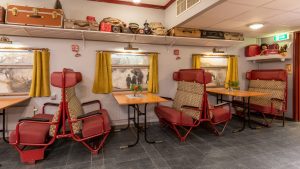
Sure Hotel by Best Western Ole Tobias
Sure Hotel by Best Western Ole Tobias offers accommodation in the town centre of Mo i Rana. The hotel is decorated with details from Norway’s railway history. Breakfast is served in “Spisevogna” (the Dining Car).
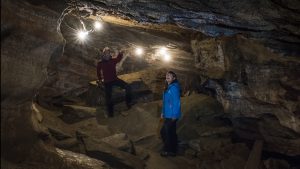
Grønligrotta Cave near Mo i Rana
Grønligrotta, with its network of passages and beautiful limestone formations, has long been one of the most visited caves in Scandinavia. Electric lighting allows you to more fully appreciate it this natural wonder, which ice and water took 700,000 years to sculpt.
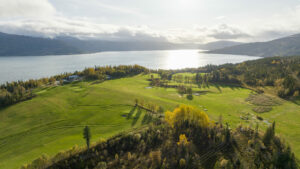
Polarsirkelen Golf – The Arctic Circle Golf
The Arctic Circle Golf course features a stunning 9-hole golf course just outside Mo i Rana, along with golf simulators for those looking to hone their skills off-season.

